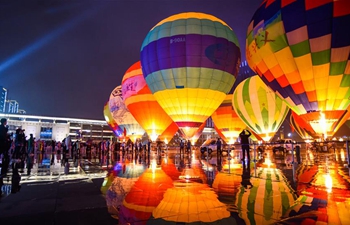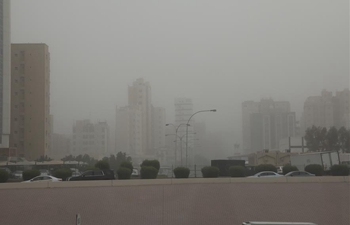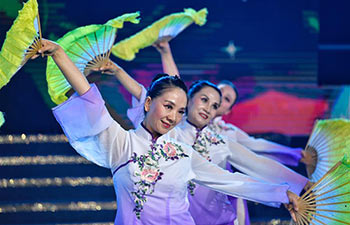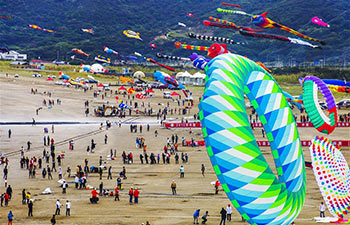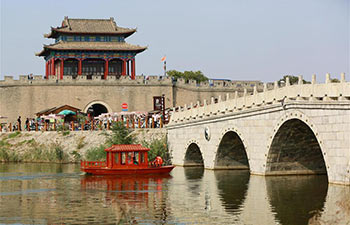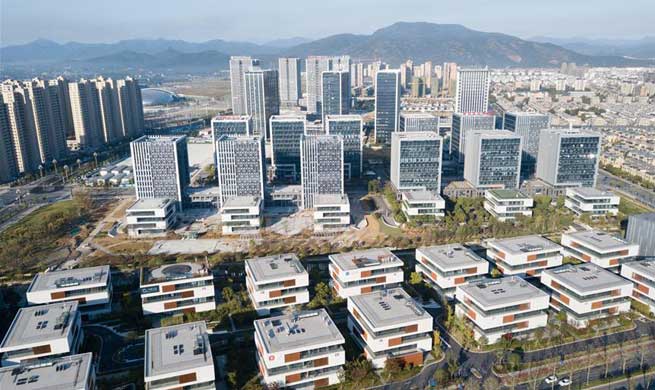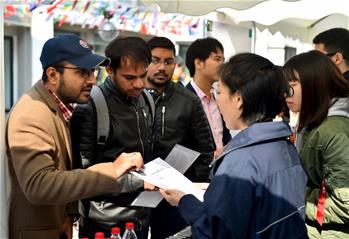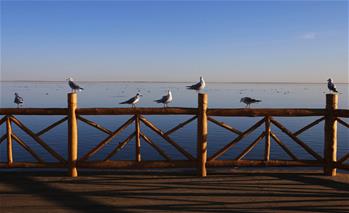by Raul Menchaca
HAVANA, Oct. 15 (Xinhua) -- Juan Cancio, one of Cuba's foremost physical therapists, arrives at a local clinic in Havana's Plaza district, where he has been volunteering since he retired.
Those who know him aren't surprised by the way he moves about the facility with ease, but newcomers are always taken aback because Cancio, 78, has been blind since birth.
Oct. 15 marks International White Cane Day, designed to raise awareness of the blind and visually impaired, the obstacles they face and the accomplishments they have achieved.
The physiotherapist is a prime example of Cuba's successful educational system, where everyone is given the chance to fulfill their potential.
Cancio received his master's degree in rehabilitation and went on to build a highly respected practice. He still sees not only patients, but medical students who seek him out to pick his brain.
Cuba's National Association of the Blind and Visually Impaired (ANCI) has more than 30,000 members, including 900 who are both deaf and blind, though many have received free cochlear implants so that they can better communicate with those around them.
ANCI operates special schools in each of Cuba's 15 provinces. The oldest center for children with visual impairment is the Abel Santamaria Special School founded 92 years ago in Havana.
For decades, it was the only center of its kind, and catered to thousands of children sent from all over the country. Today, the school has just over a hundred students, since the provincial centers now cater to local children.
To promote education among the blind, there are specialized printing presses in the Braille system, and libraries with books and printed magazines for tactile reading.
The largest Cuban library for the blind is housed at Havana's National Center for Culture and Recreation, which has over 7,000 publications in Braille, as well as books recorded on discs or other digital platforms.
There are similar libraries in almost all the provinces, in addition to sections for the blind at the Jose Marti National Library and the Ruben Martinez Villena Library in Old Havana.
"These centers contribute in a special way to the teaching and preparation of the blind," said Carlos Ramirez, head of ANCI's Education, Culture and Public Relations Department.
At present, 200 blind or visually impaired students are enrolled at universities and practically all of them have guaranteed jobs, particularly at the 146 special workshops for the disabled.
Cubans with visual impairment have also made inroads in the field of sports, namely sprinter Omara Durand, five-time Paralympic champion and six-time world champion.
In the realm of culture, there's "Without a Cane," a Cuban theatrical group featuring blind actors that have won accolades from critics and audiences.
ANCI has bestowed its highest honor upon them, giving the group the Crystal Cane Award.
The use of canes was generalized after World War II and, together with orientation and mobility techniques, allows the blind to live more independent lives.?
